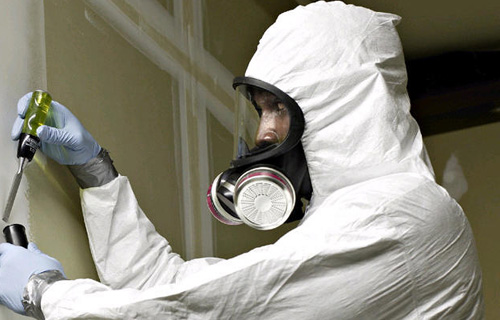Is There Asbestos in Your Bathroom?

If you have come to the conclusion that you would like to do some renovation work to the one or multiple bathrooms inside your house, you should make sure that you have taken into consideration all the factors that could impede the process. Although finances and the scheduling of a good chunk of time are usually the first priorities of any homeowner turned do-it-yourself enthusiast, for the sake of your family's well being and your own, it is important to know as much as possible about the area you are planning to work on in spite of the fact that it is your own home, in which you might have lived in your whole life, and thus you might be under the erroneous impression that you know all there is to know about it.
Bathrooms and Hidden Asbestos
Extra caution should be taken if your house is a very old one, and therefore, an inspection of the materials that will be disturbed is vital, since that which the construction industry promoted a few decades ago could have been exposed over time as extremely damaging to humans. One such example is asbestos, the mineral which took over the majority of American industries in the first half of the 20th century and found itself mixed in various construction materials due to its natural ability to withstand intense heat while also maintaining certain flexibility. It was because of properties such as these that the substance was used as insulation everywhere from the military, factories, schools and private homes.
Furthermore, it is important for people to remember the versatility of asbestos and to do thorough research of its uses among the American population. In addition to the mentioned qualities, the mineral is also durable and strong which is why manufacturers also encouraged pouring the fibers in products such as toilet seats and lids, but in cisterns as well. In these cases, the substance would act as a stabilizing agent providing products with strength and endurance. In this sense, manufacturers would aim at the composition of bathroom items, such as toilets seat, lids, and cisterns to contain as much as 10% of Chrysotile, or white asbestos, which is the most common type of asbestos to be encountered in the United States.
Hidden Asbestos and Refurbishing
Unlike the many other hazardous situations that could appear inside the home, such as it might be the case of asbestos ducts and insulation, if identified in the bathroom, asbestos is considered pretty low risk if only items such as the toilet seat, the lid, and the cistern contain it. However, there is also the possibility that asbestos fibers were mixed in the cement sheeting from the walls and from the floors, not to mention that there might also be asbestos-embedded lagging on the hot water pipes.
You should be absolutely certain in regard to your bathroom having or not having asbestos inside it before you begin any sort of project, no matter how small of a renovation you consider it to be. Have a sample tested by a professional and plan your next moves based on those facts. No amount of exposure to asbestos is safe and there is nothing to gain from endangering the health of your loved ones.
If you are confirmed in your suspicion that your bathroom has asbestos in it, the safest way to proceed would be to have an asbestos contractor put their skills and equipment to good use while your family is at a safe distance from the work site.
If you think that you would want to do the job yourself, then you should be meticulous in preparing beforehand, since creating a hazardous zone is a very real possibility in the hands of someone who is not licensed in handling asbestos. Your priority should be to create as little dust as possible. Therefore, you would have to work with no power tools, and preferably, in a dampened medium to make sure that the asbestos fibers stay intact in their compounds as opposed to being released into the air. You should also be wearing disposable coveralls along with goggles and a respirator with HEPA filters until the moment in the day that you know you are not going to be around asbestos anymore.
